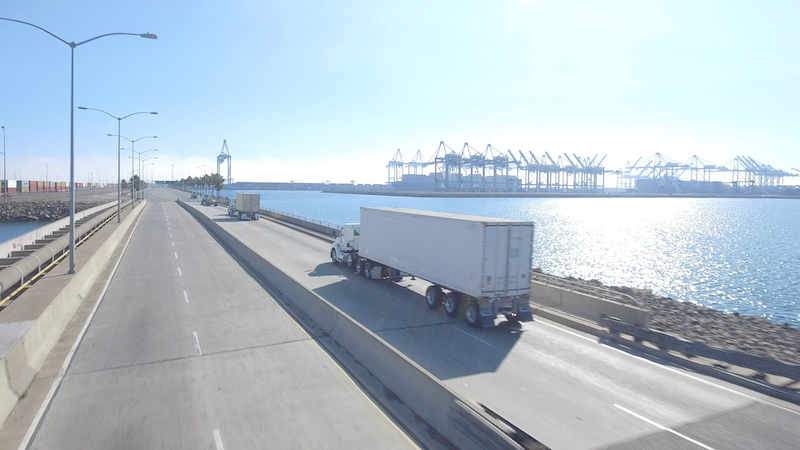The trucking industry is on the verge of a major transformation, with emerging technologies and evolving market demands reshaping the landscape. As we look towards the future, several key trends are set to revolutionize the way goods are transported across the country.
Heavy Weight Transport breaks down the newest developments in the trucking industry and what that means for the future of transporting cargo.
Embracing Technological Advancements
Autonomous Vehicles
One of the most talked-about innovations in the trucking industry is the development of self-driving trucks. While fully autonomous vehicles are not yet a reality on our highways, we’re already seeing the integration of advanced driver assistance systems (ADAS) in modern trucks.
These features, such as adaptive cruise control and lane-keeping assistance, are not only enhancing safety but also improving fuel efficiency.
Data-Driven Decision Making
The power of data analytics is transforming fleet management. Real-time tracking and advanced analytics enable trucking companies to optimize routes, reduce fuel consumption, and improve delivery times.
This data-driven approach is helping the industry become more efficient and responsive to changing market conditions.
Sustainability Takes the Wheel
Electric Trucks
As environmental concerns take center stage, the trucking industry is going green. Electric trucks are gaining traction, offering a cleaner alternative to traditional diesel-powered vehicles.
Major manufacturers are investing heavily in the development of electric trucks, signaling a shift towards a more sustainable future for the industry.
Alternative Fuel Technologies
While electric trucks are making headlines, other alternative fuel technologies are also being explored. Hydrogen fuel cell vehicles and trucks powered by renewable natural gas are also emerging as potential options for reducing the industry’s carbon footprint.
Adapting to Market Dynamics
Freight Demand Fluctuations
The trucking industry has experienced significant fluctuations in freight demand in recent years. While moderate resilience has been observed, with the ACT Freight Composite Index expected to rise by 3.2% by the end of 2024, the pace of growth has moderated. Trucking companies will need to remain agile and responsive to these changing market conditions to stay current with the needs of the industry.
Capacity Rebalancing
The industry continues to grapple with overcapacity issues, impacting truckload spot rates, or the one-time fee a shipper pays to move a load at current market pricing. While some recovery has been seen, challenges in capacity rebalancing are expected to persist through 2025.
____________________________________________________________________________
Did You Know?
Heavy Weight is an asset-based trucking company that constantly updates our fleet to ensure freight is delivered safely and legally. With customized 4-axle trucks and 20-foot, 40-foot, and 45-foot tri-axle chassis, our fleet and drivers work for you.
____________________________________________________________________________
Enhancing Driver Experience and Safety
Improved Working Conditions
As the trucking industry evolves, the focus on improving working conditions for drivers continually increases. With top priorities including better scheduling, more comfortable cab designs, and enhanced support systems, trucking leaders continue to address the challenges of long-haul trucking.
Advanced Safety Features
The integration of advanced safety technologies is becoming standard in modern trucks. From collision avoidance systems to fatigue detection, these features are not only protecting drivers but also improving overall road safety for all motorists.
Regulatory Landscape
Emissions Regulations
The trucking industry is facing stricter emissions regulations, with the EPA finalizing new CO2 emission standards for heavy-duty vehicles on March 29, 2024. This new rule, called “Phase 3”, sets stronger standards for greenhouse gas emissions from heavy-duty vehicles starting in model year 2027. These requirements are driving the industry towards cleaner technologies and more fuel-efficient vehicles.
Infrastructure Investment
Government initiatives, such as the Infrastructure Investment and Jobs Act and the Inflation Reduction Act, are providing significant support for the development of electric charging infrastructure and the production of advanced vehicle technologies.
These infrastructure investments are expected to accelerate the adoption of cleaner, more efficient trucking solutions.
The Road Ahead
As we look to the future, the trucking industry is poised for exciting changes. From electric and autonomous vehicles to data-driven operations and stricter environmental standards, the industry is evolving to meet the challenges of tomorrow. While there may be changes ahead, including infrastructure upgrades and regulatory adjustments, the future of trucking is bright.
Trucking companies that embrace these changes, invest in new technologies, and prioritize sustainability will be well-positioned to thrive in this new era. By focusing on efficiency, safety, and environmental responsibility, the trucking industry will continue to play a vital role in our economy while adapting to the needs of a changing world.
At Heavy Weight Transport, we are committed to advancing the future of trucking to ensure your cargo gets where it needs to be faster and more efficiently.
As we navigate this transformative period, one thing is clear: the future of trucking is about more than just moving goods from point A to point B. It’s about driving innovation, sustainability, and progress on America’s highways and beyond.








